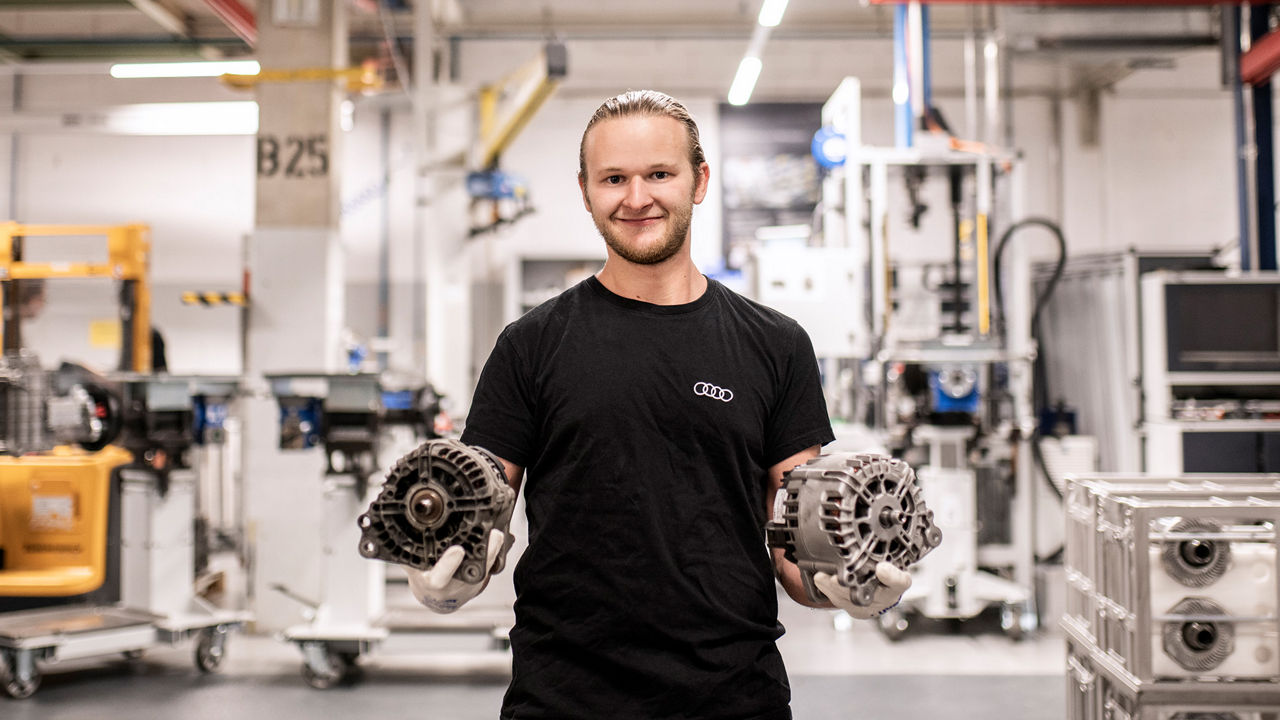Welcome to the Audi Report 2024! The combined annual and sustainability report of Audi brings together the topics of strategy, finance as well as Environmental, Social and Governance (ESG).
Back to a new life
Does the circular economy in the automotive industry work in practice as well as in theory? Audi is attempting to find this out by testing how to close as many material cycles on balance as possible in the MaterialLoop project involving 100 used vehicles.
missing translation: fa.article-intro.reading-time – 03/16/2023


The life cycle of vehicles tended to end rather abruptly up to now. For all the time spent taking trips together, sharing experiences and creating countless memories, the scrap heap was often the final resting place with only a small proportion of the materials being reused to produce new vehicles.
As part of a pilot project involving 100 used vehicles, Audi is now looking to forge new paths and aiming to ensure that the greatest possible proportion of materials make their way back into the automotive value chain. In the future, a growing number of material cycles are to be closed on balance in collaboration with partner companies. The MaterialLoop project provides Audi with a wide range of new insights on its journey toward implementing a circular economy.
Can nature act as a role model to show car companies how they can economize? “Yes”, says Dennis Christian Meinen with conviction. The expert for circular economy at AUDI AG pauses briefly and then adds: “Waste is an alien concept in nature, it’s all about material cycles. Audi is therefore using nature as a model to close increasingly more cycles along the value chain.”


Closed material loops: the MaterialLoop pilot project
More details
In the MaterialLoop project, Audi is testing a closed loop for end-of-life vehicles together with 15 project partners. The goals: first, to return as much material as possible from 100 end-of-life vehicles to the automotive cycle without loss of quality (avoiding downcycling). Second, to build knowledge with regard to design and engineering: how and from which materials should components be designed and manufactured in the future so that they can be kept in the automotive cycle? After removing components that are suitable for reselling as used parts, the focus of the MaterialLoop project was on recycling the material groups steel, aluminum, plastic and glass.
The circular economy contrasts with the traditional, linear business model, which focuses on large quantities of easily accessible raw materials and low-priced energy. Yet the world’s resources are finite and energy is becoming increasingly precious – the efficient use of both is essential. And not only in economic terms: “There is a clever definition of sustainability that we also strive to follow at Audi: anything we can make last forever is sustainable – with the emphasis on ‘forever’,” says Dennis Christian Meinen.
“We want to preserve the value of products and materials for as long as possible.”
Dennis Christian Meinen
Strategy Sustainability / Circular Economy, AUDI AG
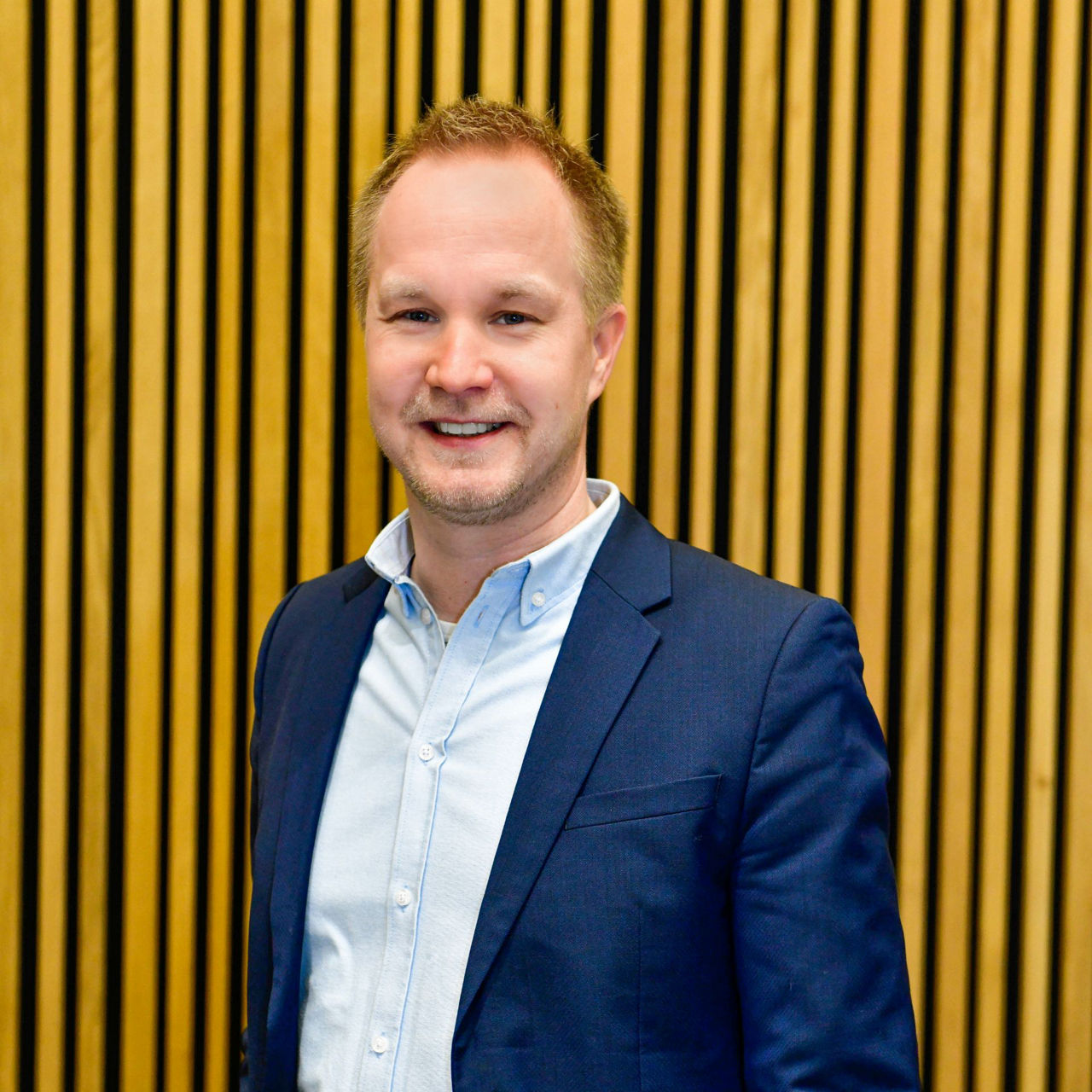
Breeding ground for innovations
The finiteness of natural resources is one of the factors that make the development of closed cycles a key sustainability issue for the Progressive brand group. Ultimately, each new vehicle is a source of valuable resources and parts. Increasingly establishing cycles is not a retrograde step in terms of technology. On the contrary: it is an opportunity to encourage and demand technical innovations. Dennis Christian Meinen explains: “The responsible use of resources lies at the heart of the circular economy. We want to preserve the value of products and materials for as long as possible. Attention is focused in this respect on durability, reparability and thus also the recyclability of our products.”
Volume of raw materials processed by Audi in vehicles in 2022
More details


Diagram is based on the production figures of AUDI AG in 2022 and current disassembly studies for individual models in the various product lines; figures may not add up due to rounding.
Diagram is based on the production figures of AUDI AG in 2022 and current disassembly studies for individual models in the various product lines; figures may not add up due to rounding.
Use of secondary materials and maintaining high quality standards should, however, not be at odds with each other. It is therefore important to return automotive secondary materials of the highest possible quality back into the automotive production cycle. “Downcycling still takes place today for different material flows from end-of-life vehicles,” says Philipp Eder, a strategist in Audi Procurement. “That means: the qualitative properties of a new product made from recycled material are lower than those of the original product. For example, if the metal from end-of-life vehicles is turned into structural steel or if car windows are remanufactured to become water bottles or insulating material then we end up in such a downward spiral.” Audi Procurement is therefore pressing ahead with projects to integrate more materials and parts in the future into a closed cycle, with the aim of preserving the same level of quality.
Examples of this are the Aluminum Closed Loop and the recently established PlasticLoop. Audi is installing safety-relevant parts in the Audi Q8 e-tron* model line which for the first time were partially produced from mixed automotive plastic waste by means of a chemical recycling process*: the plastic covers for the seat belt buckles. The parts produced are of the same high quality as new goods and have the same technical properties. Audi is therefore showing how recycling is possible without loss of quality. However, it is not just in isolated cases that Audi is intending to use parts from recycled plastic material: the aim is to achieve increased use of secondary materials, especially post-consumer recycled* materials from end-of-life vehicles.
Audi Q8 e-tron:Power consumption (combined) in kWh/100 km: 25.3–20.1CO₂ emissions (combined) in g/km: 0CO₂ emission class: A
“If everyone pulls together, then more and more cycles can be closed.”
Philipp Eder
Strategy Procurement / Sustainability Supply Chain, AUDI AG
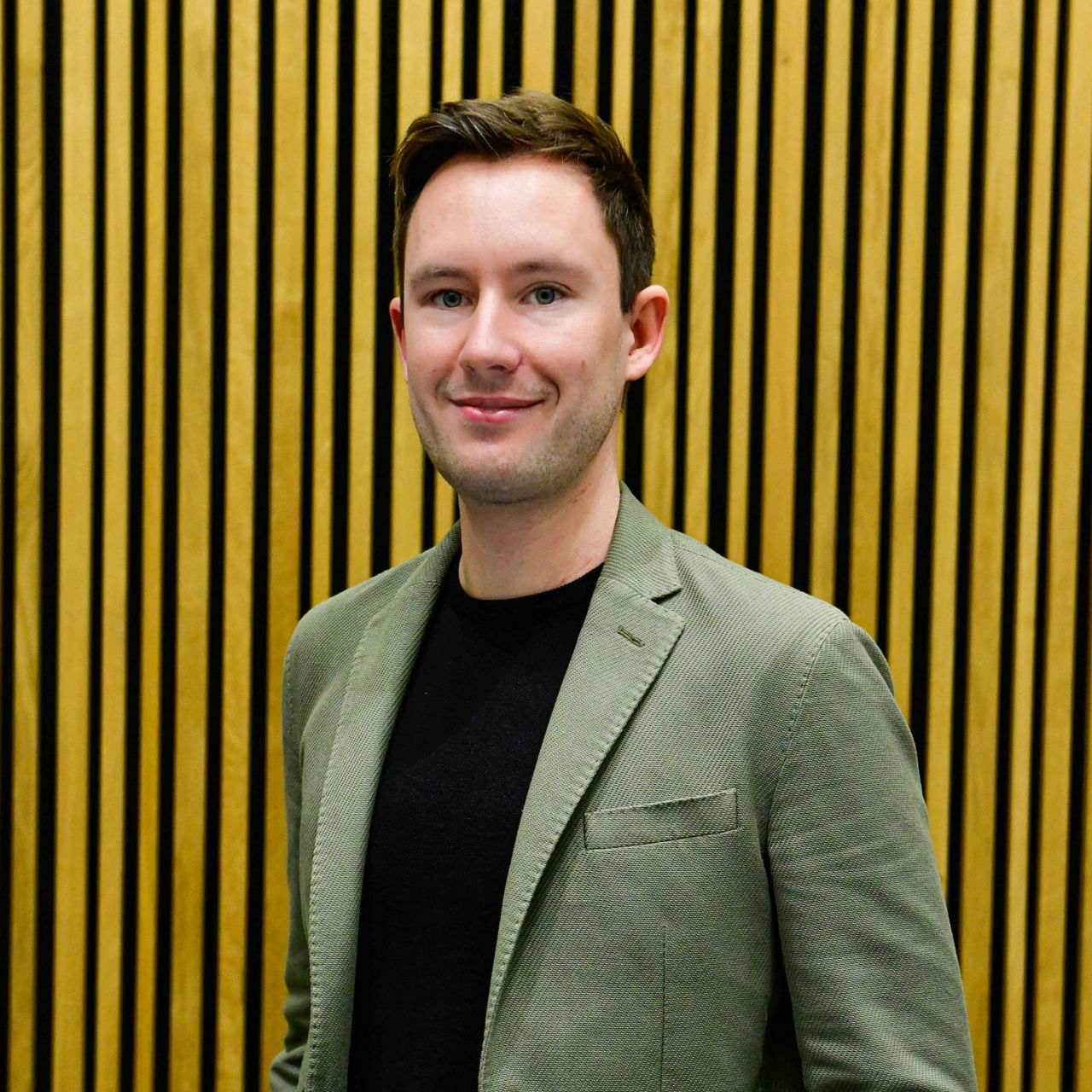
On the path to sustainable solutions
Valuable primary materials can be saved by reusing automotive materials. Meanwhile, direct access to the secondary materials could also lead to improved certainty of supply in the future. Regulatory standards are also increasingly moving in this direction, for example, in the EU with the End-of-Life Directive, which is currently being revised – this was another reason why the Four Rings launched the MaterialLoop project in fall 2022.
With a total of 100 end-of-life vehicles and in collaboration with 15 partners from industry and research, the project involves examining how vehicles that are no longer serviceable can be used as material sources for producing new vehicles, identifying which recyclable materials offer yet further potential, determining which new technical processes need to be developed and establishing what is already economically and ecologically feasible today.
In addition, the project acts as a source of valuable information for designing future models. “Design for Recycling” also plays an important role in optimizing the recyclability of products. The idea is to design parts and their components in such a way that they can be separated and sorted by material type during the recycling process when they reach their end of life. “Our objective is to make it even easier to reconcile recyclability with all of the technical requirements for our product. This is a major challenge, but offers us the opportunity to establish end-of-life vehicles as a high-quality material resource,” says Philipp Renner, who is responsible within Technical Development for matters relating to the circular economy.
The insights gained in the project will be collated in guidelines in collaboration with Technical Development and other departments and should help to optimize recycling-friendly component development. The MaterialLoop project focuses on the four material groups aluminum, steel, plastic and glass.
“Our objective is to make it even easier to reconcile recyclability with all of the technical requirements for our product.”
Philipp Renner
Technical Development / Circular Economy, AUDI AG
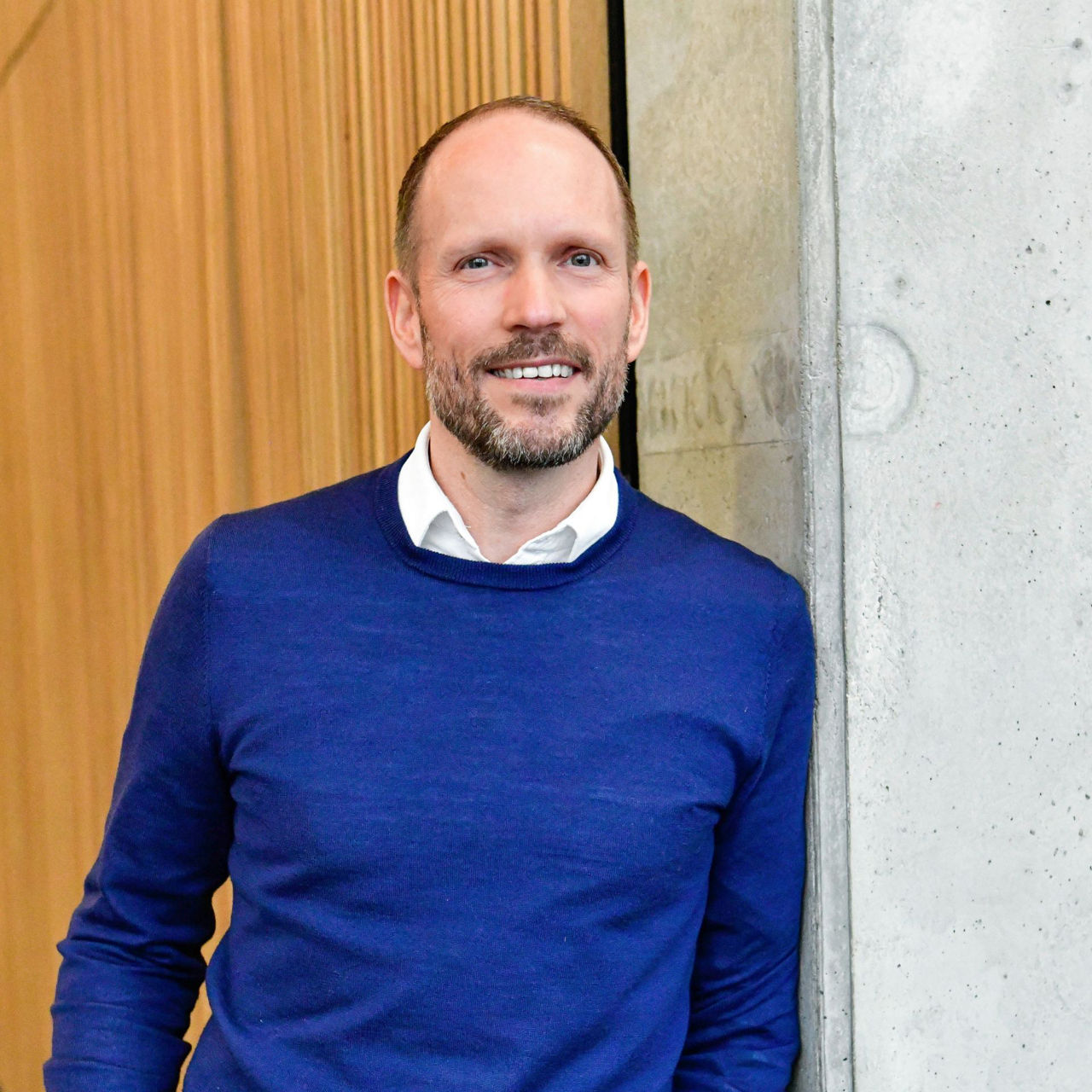
Technically feasible – but also viable in series production?
On the topic of glass, Audi already took the first steps in April 2022. “We developed a process together with our project partners which allows automotive glass that can no longer be repaired to be reused to produce new windshields,” says Philipp Eder describing the preliminary outcome of another of Audi’s pilot projects with three partner companies from the automotive glazing industry.
Remanufacturing damaged automotive glazing means that less energy and fewer raw materials need to be used overall to produce new windows. Ultimately, the use of processed material allows a reduction in the demand for primary materials such as quartz sand, for example. In addition, up to 30 percent less carbon dioxide is emitted during remanufacturing when compared with producing new glass. “This process will be tested for series production until 2023 in order to gain experience of material quality, stability and costs. If glass recycling can be performed economically and ecologically, this process should be used to produce windshields for the Audi Q4 e-tron in the future,” says Philipp Eder.
The entire industry is called upon
Philipp Eder, Dennis Christian Meinen and Philipp Renner are well aware that many processes cannot simply be converted overnight. But with the courage to embrace innovative technologies and new requirements in vehicle development it is possible to integrate numerous materials and parts into smart cycles – as proven by the MaterialLoop project. Philipp Eder: “Over the course of recent years we have learned from various circular economy projects that we can benefit from specialist know-how from the most diverse areas of the company and also from other industries. If all partners pull together, then more and more cycles can be closed.” This is what Audi is aiming to achieve with the MaterialLoop project – after all, the potential of the circular economy is far from being exhausted as yet.
Recycling of batteries
More details
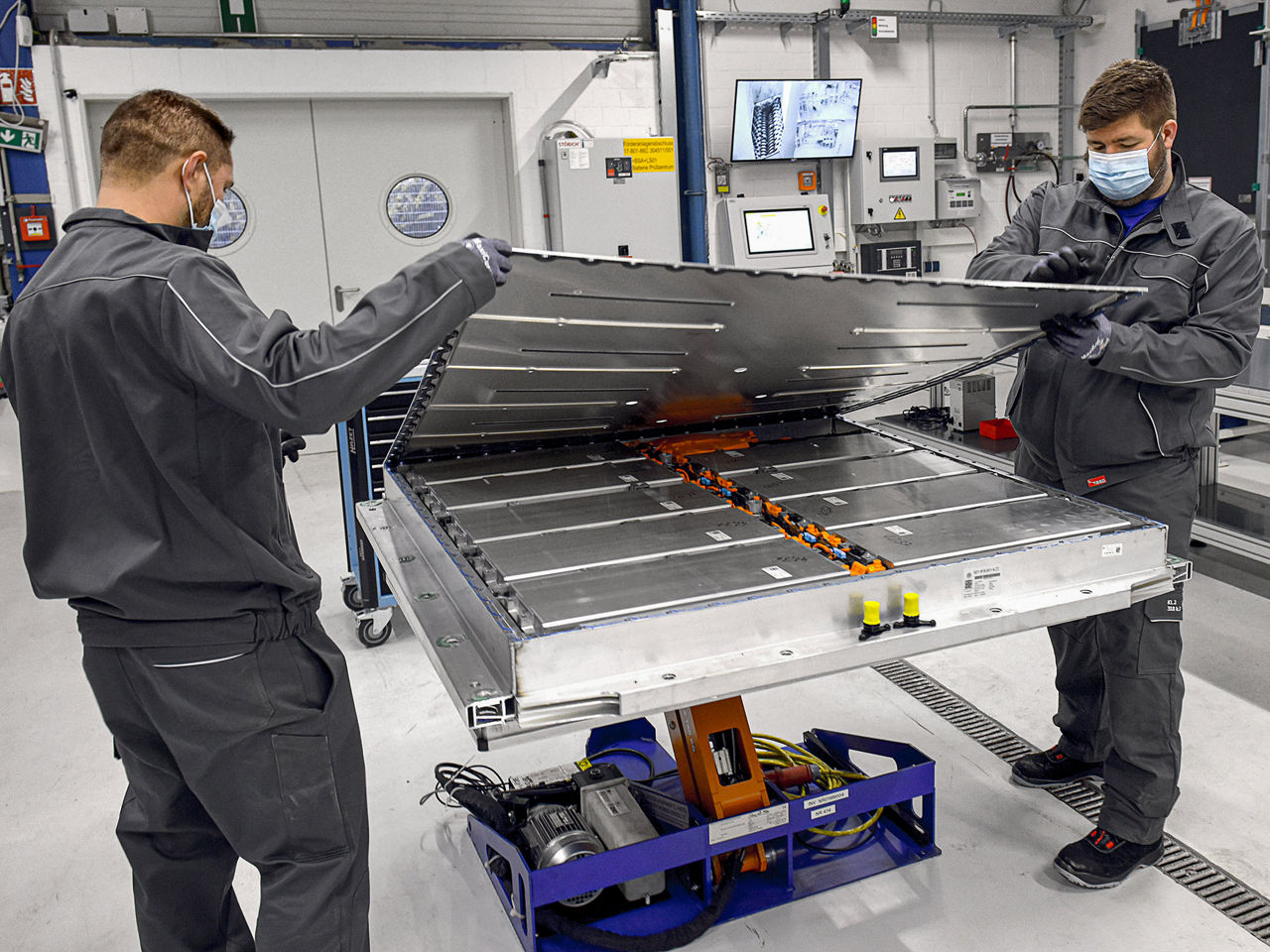
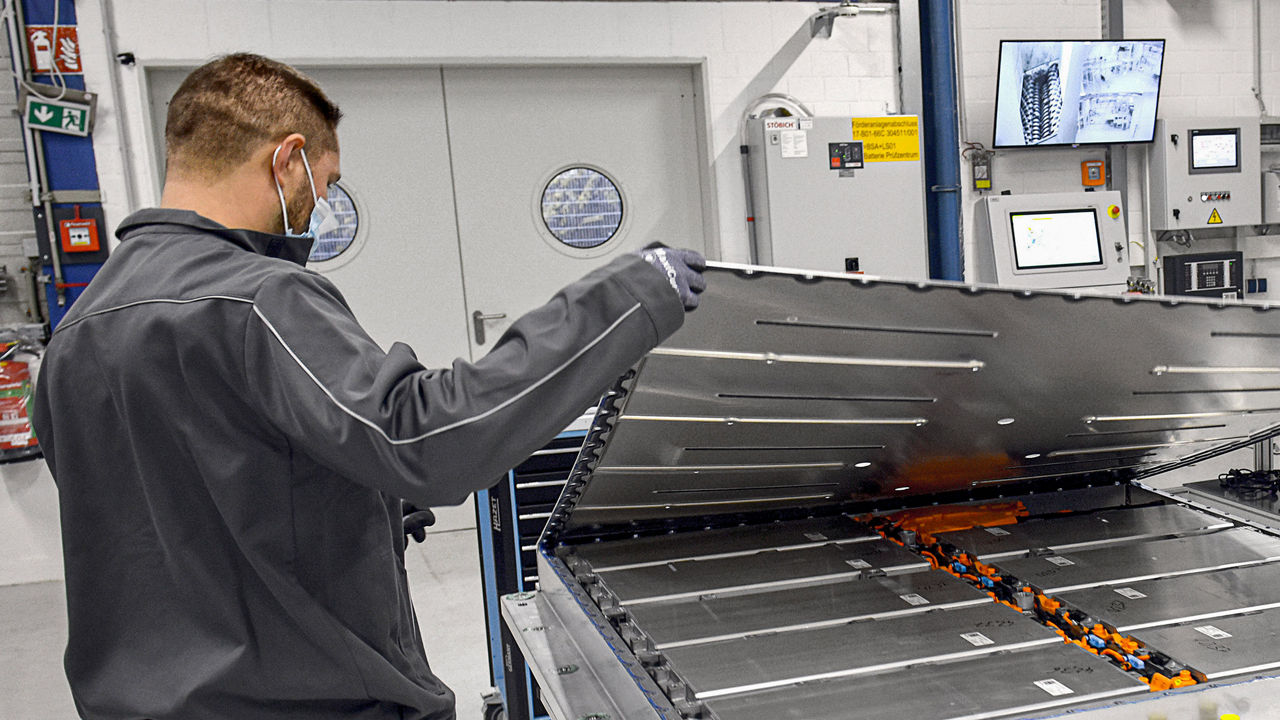
Disassembly in the pilot plant for battery recycling in Salzgitter: the battery systems are stripped of all attachments and broken down into the individual modules.
Disassembly in the pilot plant for battery recycling in Salzgitter: the battery systems are stripped of all attachments and broken down into the individual modules.
Life in it yet
The lithium-ion battery is the central element and largest component of an electric car. But what happens to the battery when the electric vehicle reaches its end of life? Disposal does not make sense either ecologically or economically. High-voltage batteries from scrapped electric cars can continue to be used meaningfully even after many years of service on the road.
Audi is developing an approach for this together with the Volkswagen Group. First, the state of health of the high-voltage battery is tested. This is done in a matter of minutes, with an analysis software developed by Audi, for example. Depending on the remaining capacity identified by the test system, the high-voltage battery can be used for one of three different purposes.
First: remanufacturing. This means that due to its condition and material value (e.g., control units and modules), the high-voltage battery can be remanufactured and then reused as a replacement part in an electric vehicle.
Second: a second life. The high-voltage battery is still in a fair to good condition and can therefore have a second life outside an electric vehicle for many years to come. For example, this can be in a flexible fast-charging terminal, in the Audi charging hubs, a mobile charging robot, a driverless transport system, a home electricity storage system or an emergency power backup system. Audi is currently testing a variety of uses.
Third: efficient recycling. This is done in Germany, for example, at a Volkswagen pilot plant in Salzgitter. High-voltage batteries that can no longer be used and whose condition is too poor for continued road use are first preconditioned here (discharge and dismantling). The energy storage units (e.g., module and/or cell) are then broken down by mechanical processes and sorted into individual fractions such as aluminum, copper, plastics and “black powder.” The “black powder” contains valuable battery raw materials like lithium, nickel, manganese, cobalt and graphite, which are separated by type by specialist partner companies using hydrometallurgical processes. These are then reprocessed in subsequent process steps into new cathode material, among other things.
PowerCo in Salzgitter is a European stock corporation in which the Volkswagen Group bundles its global battery activities. The objective of PowerCo is to manufacture battery cells with a recycling rate of more than 90 percent as part of a raw material closed loop. The annual manufacturing capacity of the cell factory is expected to be 40 GWh in the future – enough for around 500,000 electric vehicles. The Salzgitter cell factory is a blueprint and starting point for the global battery offensive – with six cell factories in Europe and the prospect of further factories in North America in the future.

.jpg)

